How to Use a Color Wheel to Match Your Clothes

Key Takeaways
- Begin with the color wheel to steer outfit selections and create synergy. Understand primary, secondary, and tertiary colors to craft combinations with intent.
- Here's a few easy formulas to style your look. Go harmonious for serene, high-contrast for punch, balanced for artsy polish, bold for dynamism, and tonal for slick minimalism.
- Mess around with temperature and saturation to create atmosphere. Warm colors feel vibrant, cool ones serene, while mixing levels of saturation keeps outfits sophisticated.
- Ground color wheel outfits with neutrals for wearability. Throw in an accessory or two for a pop of color to update your look without a complete wardrobe overhaul.
- Match colors to your undertone for flattering results. Test pieces in natural lighting, and drift toward earthy hues if you have warm undertones, cooler hues if you have cool undertones, or malleable neutrals if you're neutral.
- Avoid the usual pitfalls by consulting the wheel, balancing bright colors with neutrals, and thinking about context and scale. Take advantage of dominant, secondary, and accent colors to maintain eye ease.
Color wheel outfits utilize the color wheel to construct wardrobe looks that adhere to defined harmony rules. Whether it's complementary colors like blue and orange, or analogous shades like green, teal, and blue, the outfits just FEEL balanced and bold.
💫 Build Your Perfect Color Palette
Ready to create a personalized color palette that works perfectly with your style? Our comprehensive guide will help you build a wardrobe palette that enhances your natural features and fits your lifestyle.
Build My Palette →Monochrome sets rely on a single color with light to dark transitions for dimension. Triadic mixes — like red, yellow and blue — add lively contrast.
To keep it practical, the guide breaks down steps, swatches and real life outfit examples.
📚 Recent Articles
What is the color wheel?
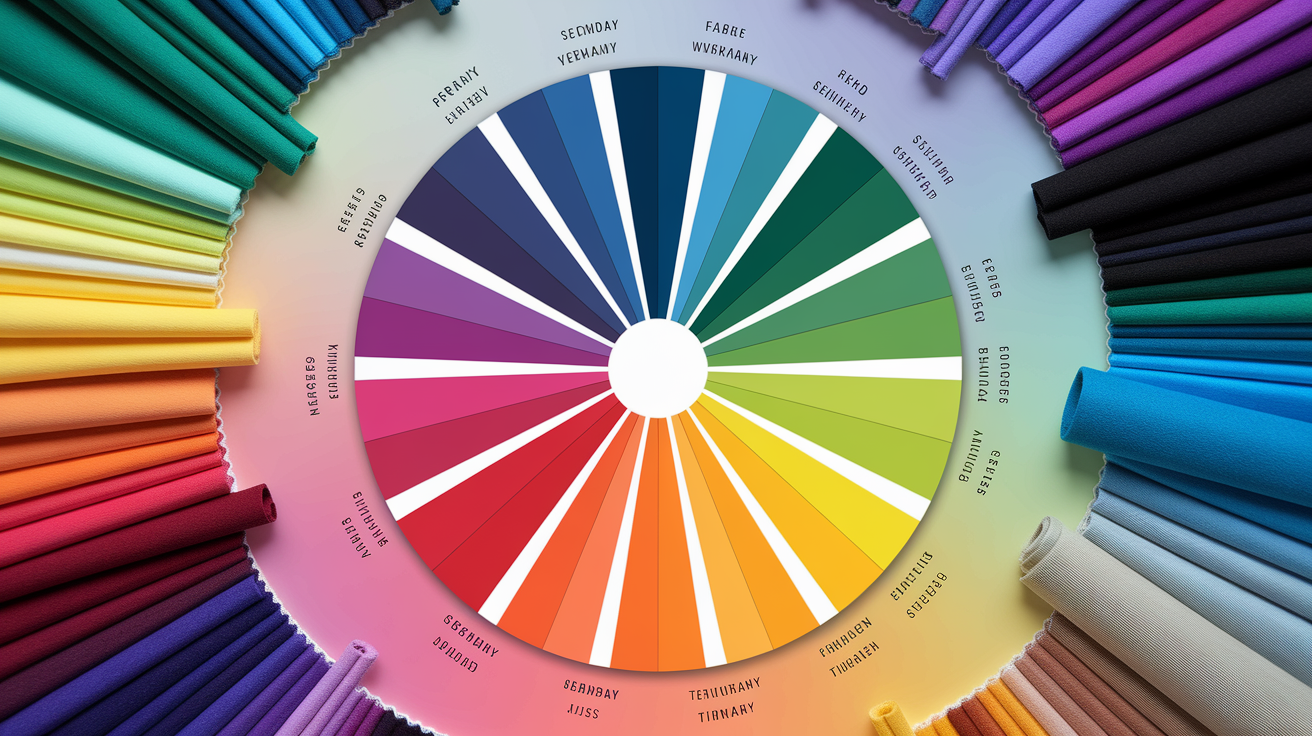
A color wheel is a circular diagram of hues organized in a specific sequence to demonstrate their relationship. Isaac Newton first mapped the spectrum onto a circle in 1666, and later Johann Wolfgang von Goethe suggested in 1810 a six-color, symmetrical wheel, not far off from what many use today.
Most wheels categorize colors into primary, secondary and tertiary and can be interpreted as warm or cool halves. Stylists use it as an easy visual cheat sheet to construct harmonious, fashionable outfits that read deliberate.
The basics
1. Red, blue, yellow: These are the primary colors, the base you cannot mix from others. They anchor the wheel and serve as the "core notes" in a wardrobe. A real red blazer or a crisp blue shirt or a bright yellow scarf can take a full look without assistance.
2. Mix two primaries to get secondary colors:
- Red + yellow = orange (imagine a rust coat with tan boots)
- Yellow + blue = green (olive pants with a cream tee)
- Blue + red = violet/purple (plum skirt with black loafers)
3. Combine a primary with its adjacent secondary to form tertiary colors, i.e. Red-orange, yellow-green, blue-green, blue-violet, red-violet and yellow orange. These in-between colors tend to come across more sophisticated—teal sweater, chartreuse shift, or coral satchel—and they mix nicely with neutrals.
Use the clothing color wheel to map basic schemes for outfits: monochromatic (one hue, varied tints and shades), analogous colors (neighbors like blue–blue-green–green), and complementary color combinations (opposites like blue and orange) for quick, reliable results.
The blends
When you mix along the wheel you get a complete spectrum of hues, as well as tints (hue + white), shades (hue + black), and tones (hue + gray). That implies that navy is a shade of blue, mint is a tint of green, and dusty rose is a toned red.
These shifts matter in clothes because fabric texture and light alter how color reads on the body.
| Base hue | Tint (lighter) | Tone (muted) | Shade (darker) | Outfit idea |
|---|---|---|---|---|
| Blue | Sky | Slate | Navy | Navy suit, sky shirt |
| Green | Mint | Sage | Forest | Sage tee, forest skirt |
| Red | Pink | Dusty rose | Burgundy | Burgundy pants, pink top |
| Orange | Peach | Terracotta | Burnt orange | Terracotta dress, cream shoes |
Blended colors assist you in constructing a personal palette. If neon orange feels blaring and loud, terracotta or peach can offer that same sense of warmth and energy with less shove.
Test small first: socks, belts, hats. Then step up to sweaters and outerwear once a mix feels right.
The temperatures
Warm colors—reds, oranges, yellows—have a lively, sunny, festive feel. Cool colors—blues, greens, purples—come across calm, crisp and serene.
The wheel splits along this warm–cool line, which helps with season cues: warm for summer or festive looks, cool for crisp workwear or winter layers.
Match temperature to your undertone for a flattering canvas. Warm undertones tend to favor gold and camel and olive. Cool undertones tend to favor silver, navy and berry. Neutrals are different too—warm beige VS. cool gray.
Use temperature contrasts for impact: pair a cool navy suit with a warm copper tie, or a warm camel coat over a cool teal dress. For harmony, stay within one side and vary depth: mustard with ochre and tan, or ice blue with slate and navy.
How to create color wheel outfits
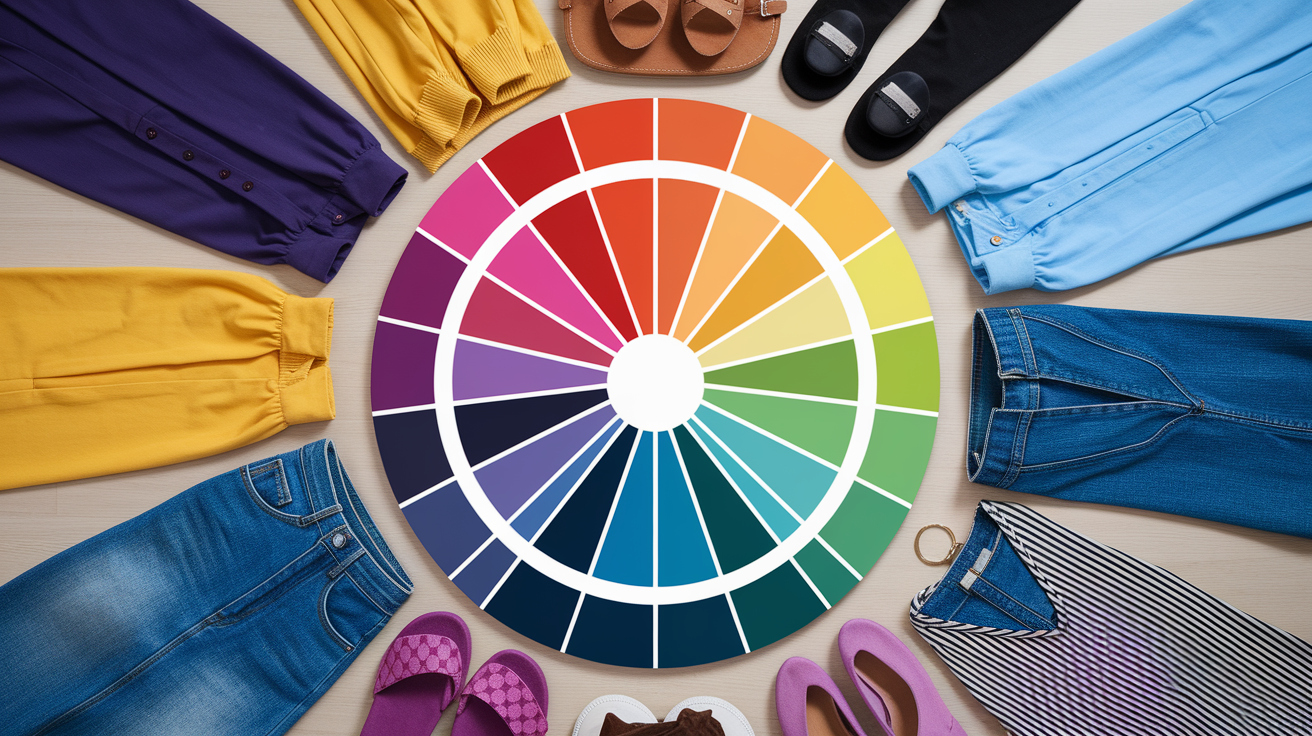
Color formulas direct obvious decisions. Use the clothing color wheel to plot harmonious color combinations, including bold and tonal looks. Select a scheme, then intentionally choose pieces that suit your mood and occasion, constructing around primary colors and secondary colors to introduce dimension.
1. The harmonious look
Analogous colors — the ones that sit next to each other on the wheel — blend well and feel calm. Think blue with blue‑violet, or olive with golden yellow-green. For more casual, everyday wear, experiment with navy + slate + blue‑violet; sage + olive + moss; coral + peach + soft orange; butter yellow + warm beige + camel.
For a mild two‑color palette, simply add a neighbor to your base color, such as teal or blue‑violet to light blue. Layer similar tones to keep it smooth: a sage shirt, olive trousers, moss jacket. It sounds sophisticated but not dull.
Monochromatic or analogous outfits: Choose 2 adjacent hues and trace on 1–2 in different values. Stylish dressing communicates calm, coherence and a consistent temper.
2. The high-contrast look
Complementary colors, such as blue and orange or red and green, reside opposite one another on the clothing color wheel. Because the clash is so striking, it's best to keep the count low and anchor with neutrals. Use harmonious color combinations to confine strong pairings to a single region for a cohesive look.
To create a focal point, consider a cobalt jacket over a sand base paired with burnt orange sneakers or a green dress complemented by a red bag. A bridge piece, like a scarf that blends both complements, ties the ensemble together.
Reach for this when you want presence: art openings, launch nights, lively dinners.
3. The balanced look
Split‑complementary and triadic schemes bring energy without chaos. Split‑complementary: pick a base (blue) and the two colors beside its opposite (yellow‑orange, red‑orange). Triadic: three colors evenly spaced (red, blue, yellow).
Spread color through top, bottom and accessories so no one zone yells. Blend bold and soft: vivid teal with muted coral and warm sand, or bright marigold tempered by dusty violet and slate.
The outcome has a creative, yet wearable flair — perfect for contemporary workdays or weekend museums.
4. The bold look
Select saturated hues–electric blue, fuchsia, chartreuse–for punch. One or two statement pieces per outfit keep impact clean. Ground with neutrals like black, stone, navy or cocoa so the bold feels deliberate, not loud.
Save it for places that welcome flair: parties, festivals, fashion events.
5. The tonal look
Monochrome = one hue, many values. Layer light and dark versions for depth: ice blue shirt, medium blue trousers, navy coat. This lengthens the line and simplifies the form.
Stay within one base color but play with its shades, tones and tints. A paisley scarf that mixes wine, burgundy and plum–or the many greens from mint to golden olive–adds lush texture without busting the palette.
A cool and clean way to dress, and simple to replicate.
Beyond the basic formulas
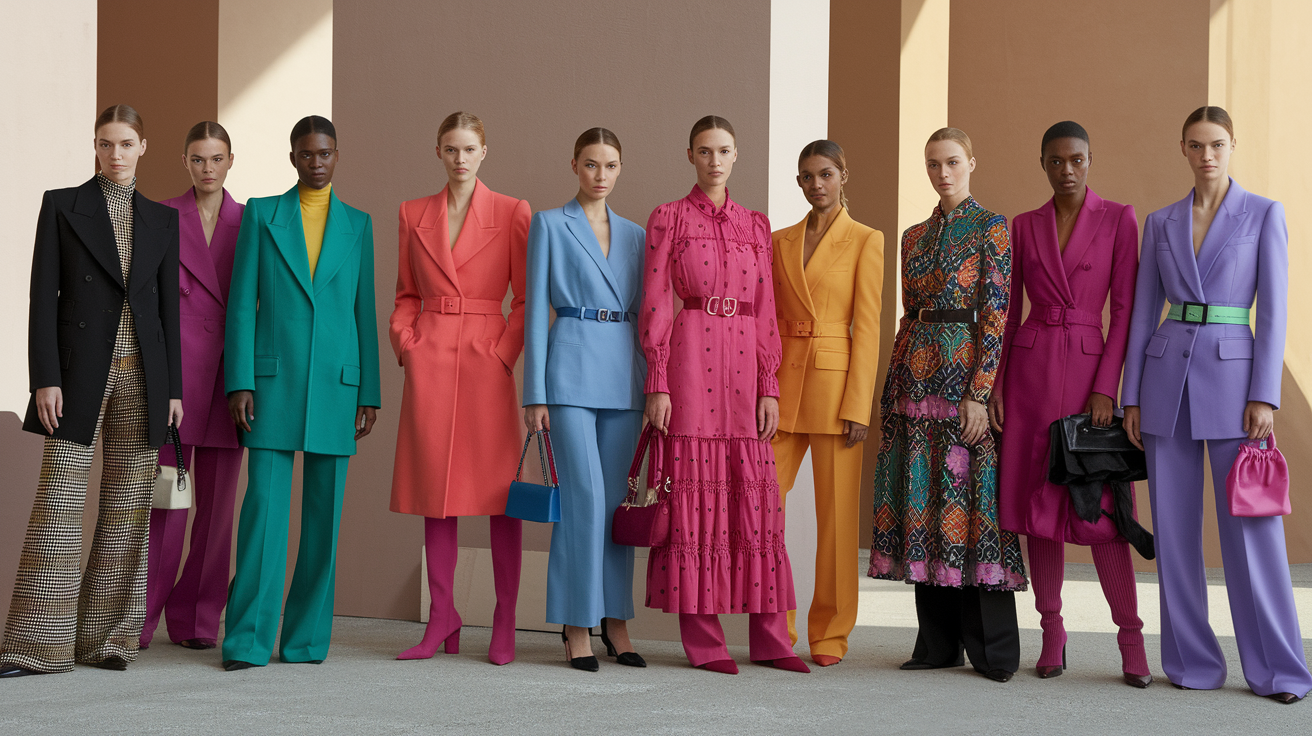
Color theory extends beyond complementary pairs. Take the wheel as a rough guide, then curve it to match your life and culture and mood.
Advanced strategies:
- Layer schemes: triadic base (yellow-red-blue), anchored with a neutral coat.
- Bridge hues with near-neutrals: taupe, camel, olive, or denim as soft links.
- Shift value and saturation to control mood and formality.
- Use prints to merge clashing colors through shared accents.
- Treat accessories as small "test labs" for bold combos.
- Blend two-color harmony with a third toning hue for simplicity.
- Keep an anchor neutral when you place two strong colors side by side.
- Let texture carry color when you want quiet impact.
Pair an inner column in gray with a matching jacket and a triadic shoe pop. About: outside of the simple equations. Remember that colors have emotional and cultural connotation—red can come across as lively or festive, white can feel innocent or dressy—so use them thoughtfully.
Non-color things count. Silhouette, sheen and scale alter the way the eye interprets color. Two equally strong hues together are high-contrast – fantastic for the daring, but often better with a neutral piece to anchor the outfit.
Texture
Texture shifts how color sits. Smooth satin intensifies shine; matte knit suppresses it. Combine an elegant navy blazer with a raw charcoal tweed skirt to add layers without loud color pops.
Stick to one color family, for example forest green, but combine suede boots, ribbed wool and silk to create subtle contrast. Textured accessories distract from solid blocks. A braided belt on a cobalt dress provides a point of focus. A beaded clutch can resonate a little accent color from a print and tie the narrative together.
Simple color formulas — inner column, outer column/suit, modern twin set, matching scarf, or color blocking — leap a level when you introduce texture. A cream column with a bouclé coat and smooth leather sneakers says sophisticated, not flat.
Saturation
Tune intensity to context. High-sat pieces zing for social hours. Low-sat tones come across cool, professional.
Mix a vibrant emerald top with more subtle olive pants to temper the energy. Mixing two primaries gives you a potent secondary; add the third primary to subdue it and make it wearable.
Low-saturation palettes fuel work days. Soft navy, stone and grey as a base, a muted burgundy scarf brings in subtle intrigue.
Toy with levels. Pair bright orange sandals with a dusty blue dress and tan bag. You get freshness, no fluff.
Proportion
Offset the volume of each color to give the eye a rest. Choose one primary, one secondary and one accent. Neutrals—white, black, grey, taupe, brown—are our shovels for balance and can ground audacious combos like purple with lime.
Use rules of thumb to place bright and neutral areas: large neutral base, mid-size color field, tiny vivid spark. Beyond the rudimentary formulas, shapes and textures assist the mixing of borders.
Proportion planner (by outfit type):
- Work suit: 70% neutral, 20% muted color, 10% accent.
- Smart casual: 60% neutral, 30% color, 10% print or metal.
- Evening: 50% deep neutral, 30% saturated color, 20% shine/texture.
How to use neutral colors
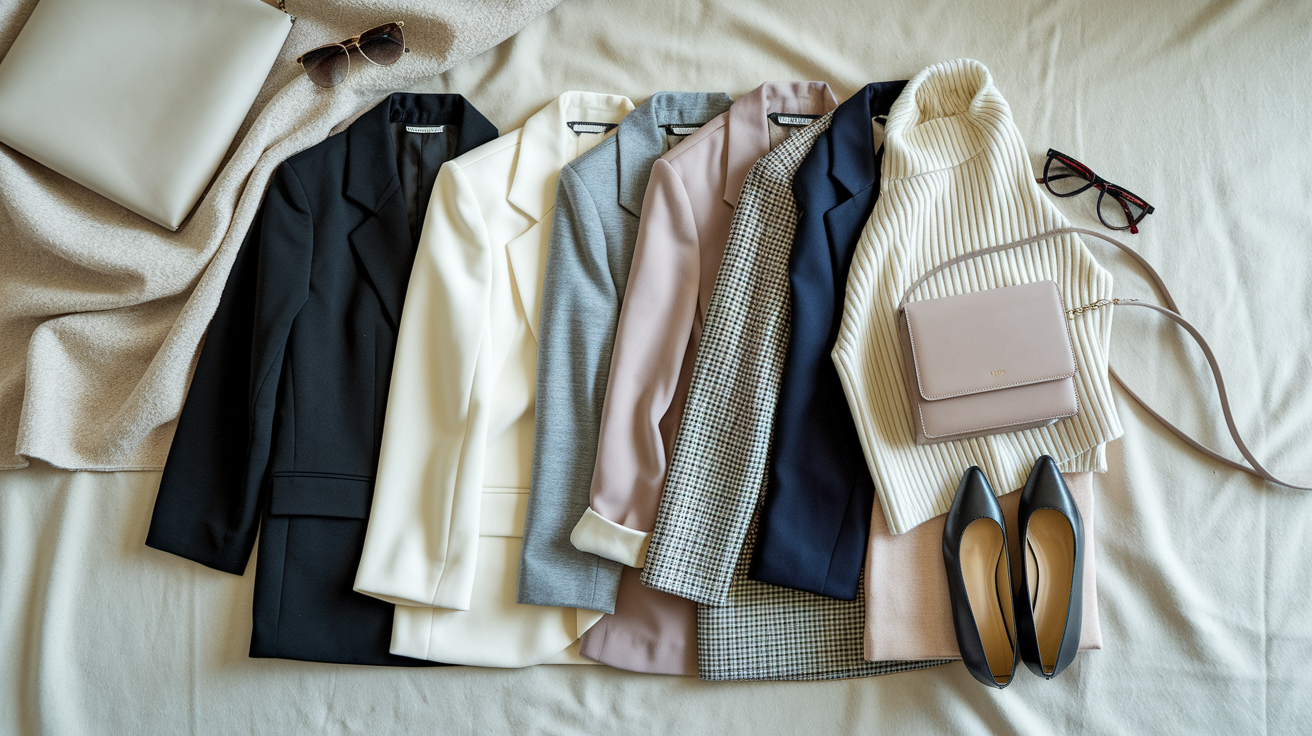
Neutrals—black, white, gray, beige, and navy—serve as the solid land masses on the island of the clothing color wheel. They tone down bolder colors, connect prints, and maintain harmonious color combinations that create chic, coordinated ensembles. Use them as your foundation for daily simplicity, and then accentuate with different colors where it matters.
The foundation
Begin with neutrals as your foundation. A black long‑sleeve crewneck, gray trousers or beige midi skirt provides structure without the noise. These tones recede, allowing bold things some space to exhale. Combine black, white and gray to achieve dimension without conflict, or match navy with tan for a gentle, reliable structure.
Layer color on top of that base for balance. A cobalt shirt beneath a charcoal blazer comes across sharp, not loud. A saffron knit atop white denim feels crisp and rooted. The neutral layer acts like a runway: color lands smoothly, even when the hue is bold.
Sand trench between a print dress and bright heels provides a crisp divide. Navy connects cool palettes, warm gray and camel connects earthy ones. Blue and brown are still a timeless combination—navy sweater with chocolate chinos looks sophisticated for every season.
Spend on good neutral basics that will serve you in the long term as well. Consider a charcoal herringbone car coat, black jeans, a crisp white tee, navy blazer and beige chinos. These form-hold, trend-defiant cores of a capsule you can remix in a flash.
A monochrome set adds polish: black jeans, black top, charcoal scarf, and that coat—cohesive and calm.
The accent
Start with an accent wall and then work your way out with accessories and art to create amazing outfits. There's nothing like a bold scarf, emerald flats, or coral tote against that gray dress to lift the whole look without overwhelm. This is the easiest method to combine neutrals with bold colors and create harmonious color combinations.
Use accents for eye flow. Bright shoes draw attention down, while a colorful earring set highlights the face, and a waist belt defines the waist. By putting color where you want the attention, you can keep the rest neutral to support the overall look.
Rotate accent pieces with the season to keep the same base fresh. Rich berry in winter, citrus in spring, ocean blues in summer, and rust in autumn can all be part of your stylish wardrobe. You hold onto the capsule, switch the accents, and it all feels fresh with different color combinations.
Keep accents to one or two per outfit. A red bag with navy and beige says polished, throw in some red shoes as well and it might just tip. Neutrals bring calm and continuity—like a neutral rug tying a room together—so your brighter accents can sparkle, not scream.
Over time, this approach accumulates a wardrobe that's timeless, versatile, and simple to mix and match, making it easier to create a cohesive look.
How to match your skin tone
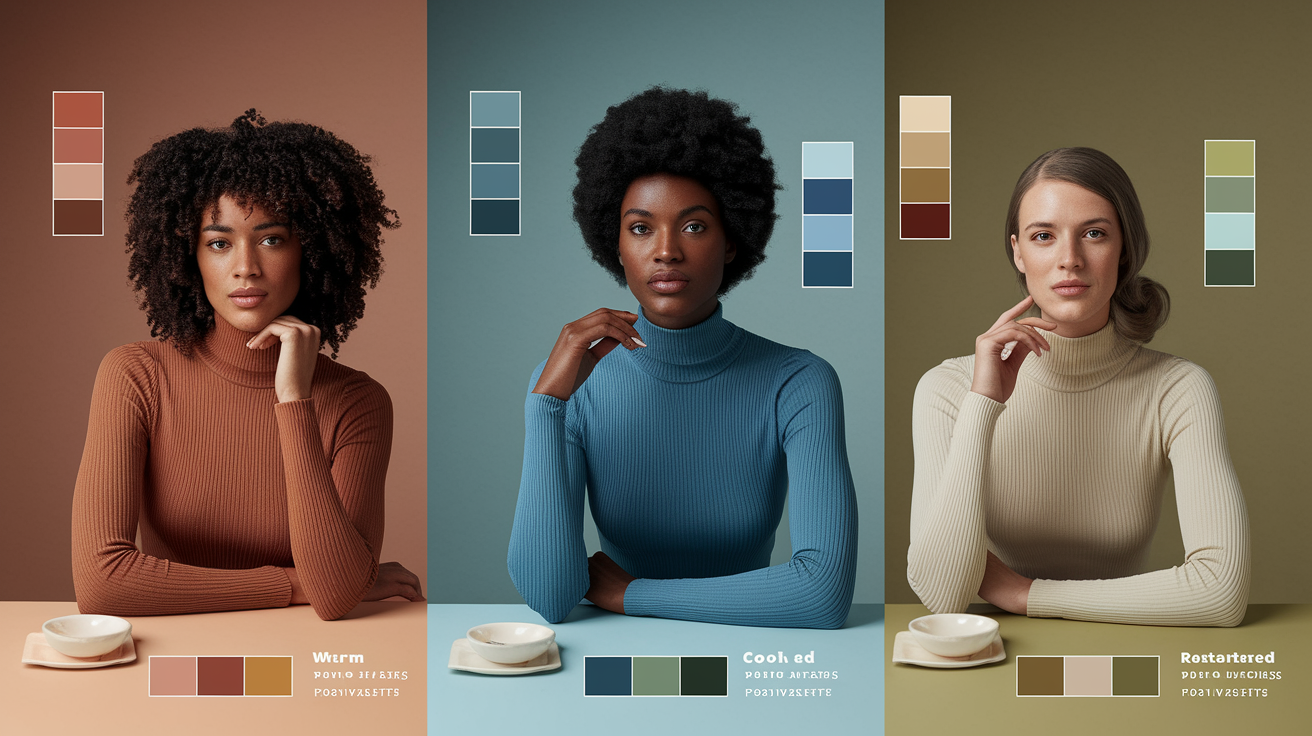
Color selections seem simpler when you're aware of your undertone. Undertone is the steady hue under your skin: cool (blue or pink), warm (yellow or golden), or neutral (a mix). Skin tone can hop seasons, but undertone remains pretty rock solid, so it's your best compass for a color wheel strategy that resists fading throughout the year.
Let it guide you in selecting base pieces, then layer accents for equilibrium.
Identify your skin's undertone (warm, cool, neutral) to select the most flattering clothing colors.
Check the inside of your wrist in daylight. If veins appear blue or purple, you probably lean cool. If they appear green or olive, you likely warm lean. If it's difficult to discern, you may be neutral.
Think about the sun test: warm-toned people often tan to a golden-brown; cool-toned people burn and turn pink. Hair hints assist as well. Ashy hair, with no golden or red highlights, tends to lie on the cool side and indicates either Summer or Winter on the seasonal color analysis chart.
Gold vs. Silver metals are a quick check: if gold flatters more, you may be warm; if silver looks cleaner on your skin, you may be cool; if both work, you may be neutral. These guides are guides, not rules. Others think the whole concept is too complicated, and that's okay.
Apply it to reduce options, not to restrict joy.
Match warm skin tones with earthy hues and cool skin tones with blues and greens.
For warm undertones, earth-linked shades echo the skin's glow. Go olive, terracotta, camel, rust, sunflower yellow. On the color wheel, lean toward warm sides: red-orange, yellow, and warm greens.
For cool undertones, colors with blue cores look crisp: cobalt, emerald, teal, icy pink, and berry. On the wheel, experiment with blue, blue-green, blue-violet. If your undertone battles a shade you adore, move the temperature, not the hue.
Pick tomato red (warm) vs. Cherry red (cool), or seafoam (cool) instead of lime (warm).
Use neutral shades for universal appeal, especially for those with neutral undertones.
Neutrals construct a solid foundation and function across environments. Beige, gray, navy, cream, taupe, charcoal—these all sit beautifully on most skin tones and allow bright accents to really sing.
If you're neutral, you can mix warm and cool without conflict. Match navy with coral, or charcoal with sage. For travel or work, a neutral core with two accent colors keeps looks crisp and versatile.
Recommended palettes
| Undertone | Everyday Neutrals | Accent Colors | Notes |
|---|---|---|---|
| Cool | Navy, charcoal, cool gray | Cobalt, emerald, teal, icy pink, berry | Summer/Winter range; silver jewelry pops |
| Warm | Camel, cream, warm beige | Olive, rust, terracotta, mustard, coral | Spring/Autumn range; gold jewelry warms |
| Neutral | Beige, gray, navy | Soft peach, dusty blue, sage, plum | Mix warm and cool with ease |
Common color wheel mistakes
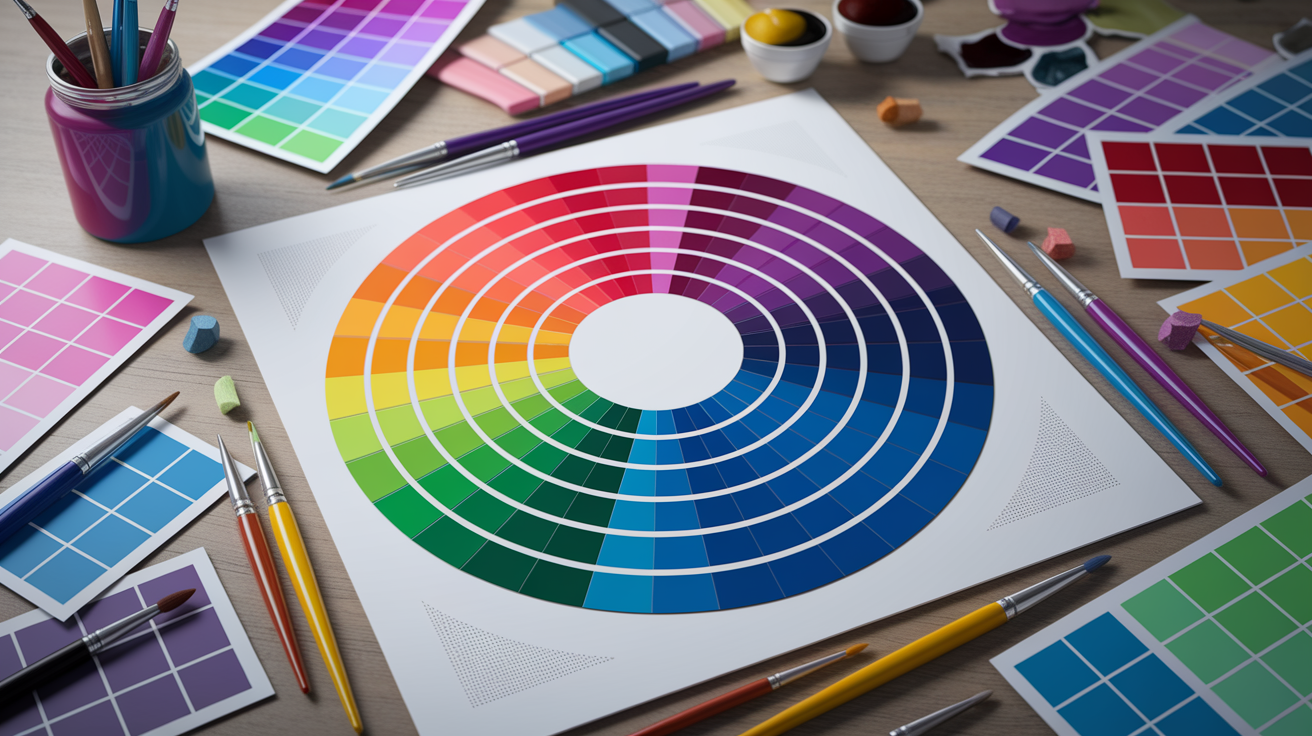
Just a couple of common color wheel mistakes can take a really sharp color plan and make it a clash. These pitfalls appear in casual outfits, travel wardrobes, and event looks alike, and they're simple to correct with a fast check of context, balance, and contrast. Understanding the clothing color wheel is essential in avoiding these errors.
- Skipping skin tone: picking shades that fight your undertone can wash you out.
- Mixing too many bright hues: visual noise and no focal point.
- Confusing warm and cool families: leads to clashing and dull skin.
- Ignoring occasion and dress code: vivid brights at a formal event feel off.
- Overusing neutrals: flat, monotone look with no energy.
- Poor warm–cool balance: the outfit feels uneasy or mismatched.
- Too-similar hues: no contrast, details disappear in photos.
- Skipping the 60-30-10 rule: no clear lead color, outfit looks busy.
- Not checking the wheel: random mixes that miss harmony rules.
- Forgetting setting and light: colors shift under neon, sun, or candlelight.
Background is important. A black tie corporate meet screams muted harmony—navy (60%), soft gray (30%), and a cool teal tie or scarf (10%). That same teal pop at a beach event may require lighter partners, like sand beige and white, so it reads fresh in bright sun, showcasing the significance of harmonious color combinations.
If you devise a daring pattern—say, magenta with chartreuse—verify the location. In hushed rooms or concert halls, that twosome can rob attention for all the wrong reasons. Take one, as a tiny accent on shoes or a belt, and anchor the balance in subdued neutrals to create a cohesive look.
Pair brights with neutrals to prevent overwhelm. Bright red with cobalt and lemon is too much for most settings. Keep red as the lead, drop cobalt to denim, and move lemon to a slim accent like a bag tag or earrings for a stylish wardrobe.
All-neutrals can fall flat. Throw in a tiny lift—olive with cream and tan, plus a coral lip or a teal pocket square—to keep depth without noise and enhance your overall look.
One of the most common color wheel mistakes is using complementary pairs. Complementary pairs (blue–orange) provide an intense contrast, mute with tints or texture, navy with terracotta suede.
Analogous sets (green–teal–blue) flow, but depth needs to be varied—forest, petrol, sky—to prevent a blur. Watch temperature: warm camel next to cool lilac can jar unless you bridge them with a neutral like stone gray.
Maintain distinct contrast. If your top and pants are virtually the same color, switch up value or texture—charcoal wool with light gray cotton—or throw on a crisp white piece to disrupt the merge and elevate your fashion game.
Do a 60-30-10 check before you leave—it settles the eye and your look, ensuring that you have the right colors for any occasion.
Conclusion
To construct robust color wheel outfits go small and go clear. Select one lead color, and then add one support color or a soothing neutral. Mix color wheel outfits: wear one bright piece, then keep the rest soft. Remember scale. Bold coats go great with crisp jeans and white sneakers. A cherry bag elevates a black dress with minimal effort.
To match your skin tone, try on in daylight. Gold glimmers next to warm skin. Silver next to cool skin sizzles. Mixed tones can go either way.
To prevent clashing, check the wheel, then check the mirror. Go with what 'feels' right.
To give it a whirl today, choose your lead color, extract two accents, and rock it.
Frequently Asked Questions
What is the color wheel in fashion?
The clothing color wheel is a visual representation of the relationships between colors, guiding you to combine shades that complement or conflict. Use it to create amazing outfits with harmonious color combinations, like complementary, analogous, triadic, or monochromatic schemes.
How do I start creating color wheel outfits?
Select a dominant color from your outfit using the clothing color wheel. Look for its complementary or analogous colors to create harmonious color combinations. Keep your palette to two to three colors and mix in neutrals for balance.
Which color combinations are the easiest to wear?
Analogous color combinations are the simplest approach to achieving a cohesive look. Select two to three adjacent colors, like blue, blue-green, and green, which create a calm ensemble. Ensure one color is dominant while the others accent, complemented by neutral shoes or a bag.
How do neutral colors fit into color wheel outfits?
Neutrals ground vibrant hues, making them essential for achieving harmonious color combinations. Use your clothing color wheel to incorporate black, white, gray, navy, camel, or olive to mellow out strong combinations. Put neutrals in bigger pieces like pants or coats while allowing bolder colors to pop in a top, scarf, or bag for a cohesive look.
How can I match outfits to my skin tone?
Identify your undertone: warm, cool, or neutral. Warm tones harmonize with earth colors, while cool colors complement jewel tones, and neutrals work with various shades. Check by holding fabric next to your face in daylight to find the right colors that illuminate your skin.
What are common mistakes when using the color wheel?
Overdoing it with colors can lead to unbalanced color ratios that jostle! For a stylish wardrobe, cap at three colors, focusing on harmonious color combinations and testing in natural light for the right colors.
Can I mix prints while following color wheel rules?
Yes. Try to stay within the same color family for prints, using harmonious color combinations. Mix scale—one loud, one quiet. Offset with a neutral base to settle the look, and repeat one color across articles to create a cohesive look.